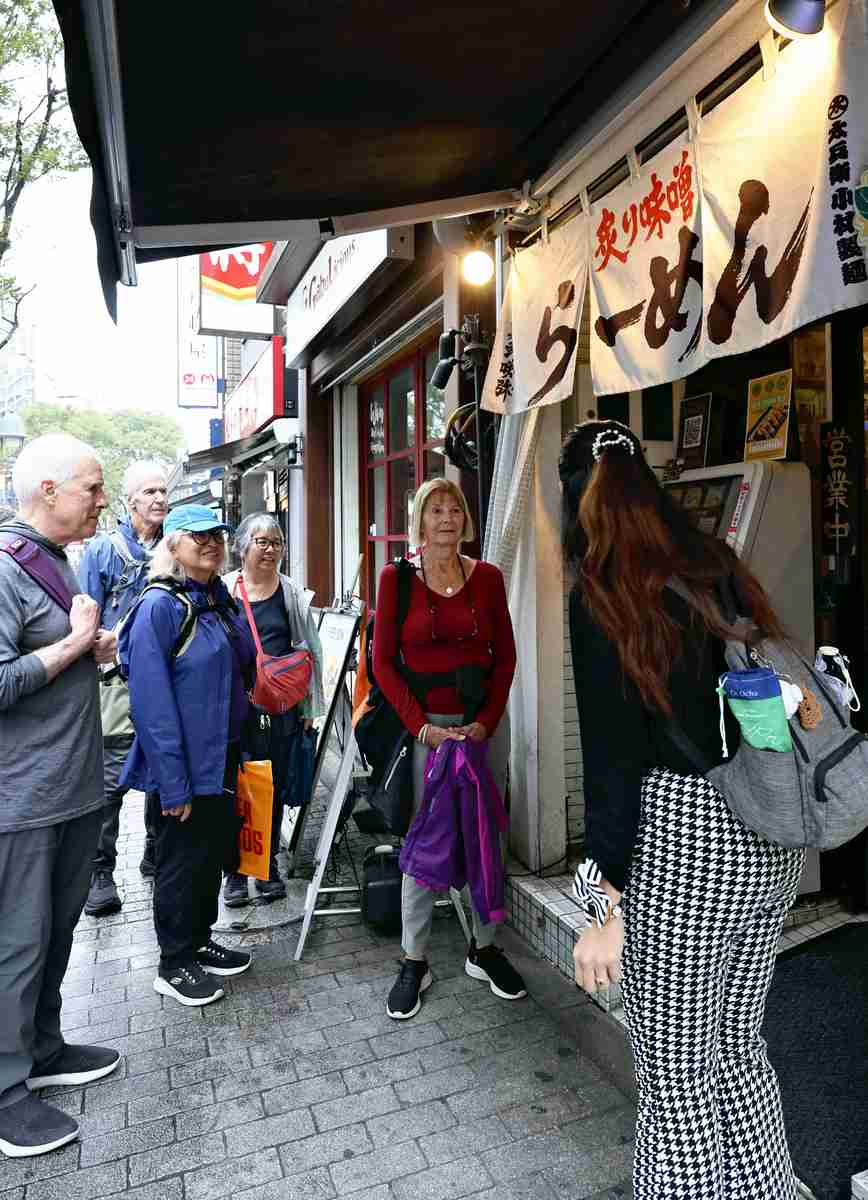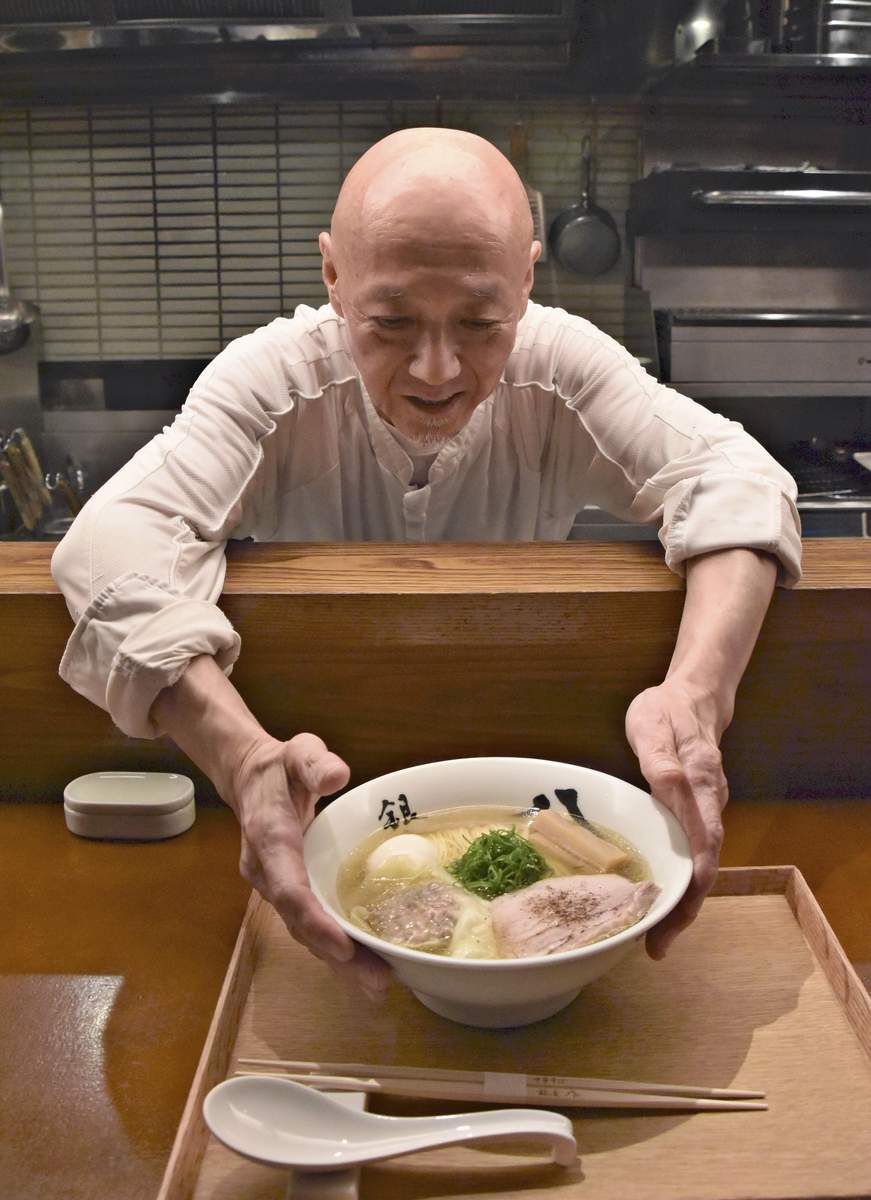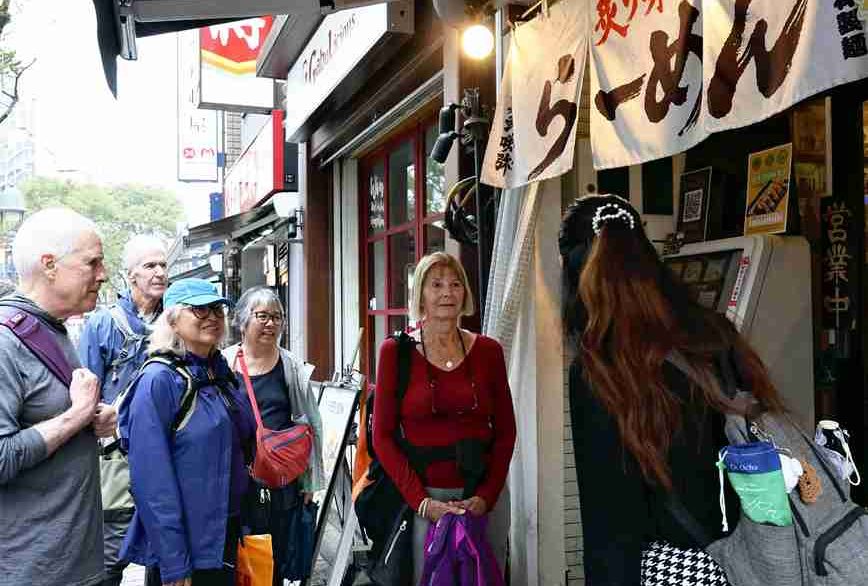
The Yomiuri Shimbun
Foreign tourists visit a ramen shop as part of a tour in Shibuya Ward, Tokyo, on Oct. 16.
12:41 JST, November 15, 2025
A ramen boom like never before is sweeping Japan, driven by tourism and turning the beloved national dish into an international sensation.
The market for ramen restaurants is estimated to have reached a record high of about ¥790 billion last fiscal year, making it 60% larger than it was 10 years ago, according to a credit research company.
This surge is being propelled by the ever-growing number of foreign visitors to Japan.
Ramen tours
Seven American tourists were speaking excitedly about what kind of ramen they would get. It was past noon in mid-October and they were standing in front of a miso ramen restaurant in Shibuya Ward, Tokyo.
The group was part of “Tokyo Ramen Tours,” organized by a Japanese travel agency. The tours hop between three restaurants in the ward over three hours, letting participants compare six small bowls of ramen.
Once the Americans were instructed in English by their Japanese guide to add takana mustard greens to their taste, they ate their noodles.
A 68-year-old participant, who drives for over an hour to eat ramen in their home city of Washington, sounded satisfied, saying that every restaurant in Japan is authentic and offers many different flavors.
Despite the tour costing nearly ¥20,000 per person, the organizer receives requests from thousands of foreign tourists every year.
Sushi dethroned
The number of foreign visitors to Japan last year reached a record high of about 36.87 million, according to the Japan National Tourism Organization.
This year, 31.65 million people had already visited Japan by September, putting the country on track for a new record.
But it is ramen that has really won over the wave of new visitors, pushing aside the definitive symbol of Japanese cuisine: sushi.
In fact, 18.9% of respondents to a survey said ramen provided the “most satisfying dining experience,” taking second place to meat dishes but edging out sushi by 4.4 percentage points, according to the Japan Tourism Agency, which conducted the survey on consumption by foreign tourists last year.
“As a unique Japanese culinary experience, ramen enjoys strong recognition overseas. Visiting a ramen shop in Japan has become a kind of status symbol,” said Daisuke Iijima, deputy section chief of the information management section at Teikoku Databank Ltd.
The company estimates the market for ramen restaurants reached a record high of about ¥790 billion in the last fiscal year.
“The influx of new restaurant chains into the ramen market, capitalizing on its popularity, also stands out. We expect the market to grow further,” he said.
A growing culture
While visitors to Japan are often said to search for their favorite restaurants on social media, traditional guidebooks still serve as a valuable way to find popular spots.
Since 2015, 246 ramen shops have received the Bib Gourmand designation — awarded for high-quality food at reasonable prices — in the Michelin Guide for Tokyo restaurants.
Ginza Hachigou, which opened in Chuo Ward, Tokyo, in 2018, is one such establishment. Half of its customers are travelers from Europe, the United States and various Asian countries.

The Yomiuri Shimbun
Yasushi Matsumura, Ginza Hachigou’s owner and chef, serves “ravioli gourmandise chuka soba” at his shop in Chuo Ward, Tokyo.
The most popular item here is the “ravioli gourmandise chuka soba,” which costs ¥2,200 including tax and features a wonton wrapped around a truffle and foie gras filling, the restaurant said. As it only serves 30 bowls of the dish per day, it says it sells out by early afternoon.
“We have a customer who has made the trip from the United States more than 10 times. I can feel how far ramen culture is spreading,” said owner Yasushi Matsumura, 66, who formerly was a chef for French cuisine.
But what does the future hold for ramen?
“I think we’ll see more bowls that are packed with the distinct personality of the ramen shop’s chef, rather than being limited to classic flavors like tonkotsu pork broth or soy sauce,” said Kazuaki Tanaka, 52, a ramen enthusiast who eats more than 700 bowls a year and is nicknamed the “ramen bureaucrat.”
Ramen’s origin, evolution
Rairaiken, which opened in Tokyo’s Asakusa district in 1910, is said to have been the first ramen shop in Japan, according to the Shinyokohama Ramen Museum in Yokohama.
After the Great Kanto Earthquake of 1923, ramen shop owners from Tokyo and Yokohama, whose businesses were destroyed, evacuated to other prefectures. This became the catalyst for ramen to spread throughout the nation, the museum says.
The milky white tonkotsu both was created in Kurume, Fukuoka Prefecture, shortly after the war in 1947, and it established itself throughout Kyushu.
When miso ramen was invented in Sapporo in 1954, it quickly spread to the rest of the Japanese archipelago.
Yoshimuraya, which was founded in Yokohama in 1974, is the originator of the iekei style of ramen known for its rich pork bone and soy sauce broths. With its increasing number of franchise and spin-off restaurants, the brand is enjoying nationwide popularity.
The 2000s saw a series of hit products being created, such as toripaitan creamy chicken broth and tanreikei light and clear broth.
“Ramen has never lost its popularity, and it has gained new fans with every boom,” said Yoji Iwaoka, 66, head of the museum. “Although prices have risen, the appeal of ramen lies in its still-accessible price point, allowing people to enjoy it casually. It will remain an accessible gourmet food.”


AloJapan.com